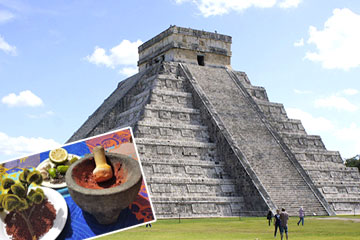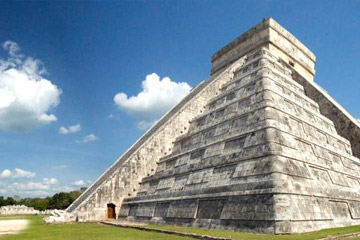Chichen Itza, the beauty between heaven and the underworld
Get closer and peep through the gates of water that lead to the underworld and discover the Mayan gods that dwell in the heavens
In the Maya dialect from the Yucatan península, “Chichen” means “mouth of the water well”, “Itza” means “sorcerer of water” whom walked through turquoise blue water streams that flow between rock formations creating natural water wells called “Cenotes”. The Maya believed that these water wells were the gates of the underworld where their gods lived. So “Chichen Itza” can be interpreted or translated as “Mouth of the well of the Itza”.
Of all the ancient Mayan cities in Mexico, Chichen Itza is considered the most famous around the world and after Teotihuacan, is the most popular archaeological site in the country. It welcomes just over a million visitors every year.
In 1998, UNESCO gave Chichen Itza the title “World heritage site” and in 2007 it was voted one of the “New 7 wonders of the world”, according to an international poll that took votes from more than one hundred million people and was organized by the “New Open World Corporation”.
Why is Chichen Itza so important and what can we find there?
Chichen Itza will immerse you into an ancient history of epic battles that were fought for honour and splendour. According to historical data given by “The National Institute of Anthropology and History” (INAH) in Mexico, small Mayan groups first established Chichen Itza between 525 – 1200 AD. Towards the year 800 AD, groups of the Toltec civilization invaded the area and by doing so, they merged two strong cultures that made Chichen Itza, the most powerful city in the Yucatan península. At the beginning of the 12 th century, Chichen Itza reached its highest splendour with the Maya building the most impressive edifications such as:
- The pyramid of Kukulkan, (The Castle). This pyramid was a ceremonial temple used to practice the cult of the feathered serpent deity (Kukulcan) and where, during the equinox and summer solstice, it’s possible to admire an amazing light and shadow casting effect that reveals the feathered serpent on its way down the main steps that lead to the top of the pyramid.
- The thousand Column Temple and The Temple of the warriors. The carvings in the columns and murals describe hundreds of battle scenes and warriors, as well as religious ceremonies performed by ancient priests. In this temple we find one of the most emblematic statutes of the entire site, the statue of the deity “Chac Mool”
- El Caracol or “The Snail”. This building is a Mayan astronomical observatory where you can still observe the alignment of various celestial bodies.
- The temple of the Jaguars: This is a building that overlooks the court where the traditional Mayan ball game was played.
If all this wasn’t enough, Chichen Itza also contains two “cenotes” where ancient jewels and the remains of sacrificed young girls and children have been found. Its natural formations are as beautiful as its cruel past. The Maya used to perform these human sacrifices in the “Cenotes” in order to pay tribute and request favours from the gods of the underworld.
How to get there?
Chichen Itza is located between the town of Valladolid and the city of Merida on the Yucatan península in the South of Mexico, approximately 128 km from Merida, heading towards Cancún.
Go Chichen offers attractive and varied tour options around the most interesting areas of beautiful Chichen Itza. Whether you depart from Cancún, Merida or the Riviera Maya, our tours can be tailored to your time and budget.





